The Latest News and Views about ANTINOUS the GAY GOD
Compiled and Updated
By
Hernestus, Priest of Antinous

MARCH 21st 2009
The Latest News and Views about ANTINOUS the GAY GOD
Compiled and Updated
By
Hernestus, Priest of Antinous

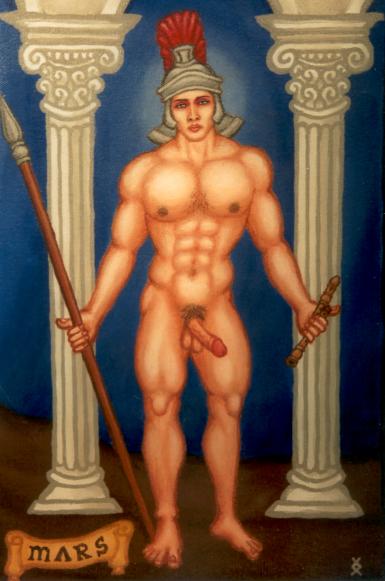
The Sun entered the Sign of Aries Friday at the exact same hour at which ANTINOUS THE MOON GOD aligned in perfect conjunction with the STAR OF ANTINOUS in the Sign of Capricorn.
In the Religion of Antinous we mark this passage with The Cerealia, which is a cluster of commemorations (some solemn and some festive) which all focus on the Equinox. It is very propitious that we mark The Cerealia when The Moon and the STAR OF ANTINOUS are in alignment, since Antinous was worshipped in antiquity as a Lunar Deity.
At the Equinox, we pay humble homage to Mars. This is particularly significant this year because the Equinox marks the official start of THE YEAR OF MARS 2009.
Courage and bravery are not usually the first things that come to mind when people look at an image of sweetly beautiful Antinous. We don't necessarily think of Antinous as being a warrior.
We don't think of ourselves as being warriors. It is not fashionable to be war-like. Just this past weekend I stopped by my local Wiccan supply shop run by a very pleasant middle-aged witch with green eyes who sells me the very best herbal valerian nighty-night sleepy-time tea.
As she was sifting the tea leaves into a paper bag for me, I noticed a rack of amulets and talismans. They were the usual assortment of copper-and-brass pendants with arcane symbols etched into them for love, prosperity, health and so on. The ones for love were nearly all gone. But there was one rack which was full of pendants. I didn't have my reading glasses on, so I asked here what they were.
"Ah, that's the Warrior Talisman rack," she said. "Nobody ever buys them. Nobody wants to be identified as a warrior. Everybody wants to have love and success. But they don't want to fight to get it."
I picked up one of the Warrior Talismans and looked at it and I saw the alchemical symbol for Mars plus the sigils of Graphiel (the Intelligence of Mars) and Barzabel (the Spirit of Mars).
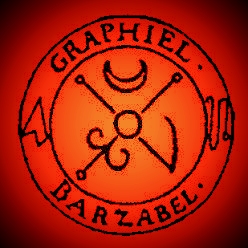
The green-eyed witch looked at me very intently (the way witches do when they are looking through you to something beyond you) and she said, "It's odd that women and gay men who come into this shop suffer from low self-esteem and from empowerment issues, and yet they don't want to even touch the Warrior Talisman. But the one thing any magical person needs is fortitude and determination."
The green-eyed witch was right, of course. There is an inner warrior in each one of us, but in some of us this warrior is underdeveloped to the point that we are unable to stand up for ourselves, even when necessary.
A warrior is someone with the strength to stand up for what he or she believes; someone who perseveres in the face of challenges and obstacles ? someone who speaks and acts in the service of an ideal ? someone who protects those who are too weak to fight for themselves.
Regardless of the reasons for an underdeveloped inner warrior, you may begin to notice the lack of its fiery, protective presence and wish to awaken it. You may need to stand up for yourself in a certain relationship or situation, or you may have a vision you want to realize, and you know you will need the courage, energy, and strength of a warrior to succeed.
Similarly, if you find that you often feel scared, anxious, or powerless, rousing this sleeping ally may be just the antidote you need.
Our own Arch Priest Antonyus Subia explains why Mars is important to us:
"Mars, God of War, son of Jupiter and Juno, father of Romulus and Remus, founders of Rome, was the divine spirit of the Roman Army whose legions subjugated the world.
"His power ran like molten steel in the blood of Romans who he made them invincible. The ram was sacred to him, and thus the sign of Aries was devoted to him, as it was in the early spring, after the fields were sown and before the harvest that the men went to war.
"Originally Mars was an agricultural deity, whose duty was to protect the fields from marauders, but he soon became an aggressive conqueror, whose sacred spears were ritually shaken by the Flamen Martialis when the legions were preparing for war.
"He had twin sons who accompanied him and went before the armies in battle, their names were Phobos and Deimos, fear and panic. He was the illicit lover of Venus, and it is said that they were the co-creators of Rome who through war brought love and peace to the whole world.
"It was in this spirit that Hadrian worshipped the pair.
"Mars is the great spirit of masculinity, the violent, courageous power of the male sex, the penetrator and subjugator. His emblem, an iron spear, is a symbol for the phallus, and so it is that Mars is the great potent Phallus of Man, the impregnator. In this sense he is venerated as the warrior within all men, and as our most extreme, animalistic, carnal, aggressive nature. He is the conqueror of winter, the dominator of spring, the protector of life, and the bringer of death. He is war and fury, selflessly courageous, for the protection of the weak and for the defeat of the strong. Mars never surrenders, and this is why Venus is so mad with lust for him, and why we adore him as our protector."
Fear and Panic are extending their icy fingers to grip the hearts of millions around the world. I know many of you are fearful about losing your job or your savings in the global economic meltdown. I know many of you are probably doing the work of three, and struggling to get it done with a fewer resources. More work for less pay. You consider yourself lucky to have a job at all ? and worry about the next wave of layoffs.
That's where Mars Energy comes into play. Mars and his "fearsome" Sons of Fear Phobos and Deimos are ready to turn your fears inside-out so as to arm you with the psychic protection you will need for the coming transformations which Capricorn Pluto is going to wreak on the world stage in the coming months ? and years. The last time Pluto was in Capricorn was in the 18th Century when political revolutions raged in France and America. This time economic structures are being brought down and reshaped.
Remember when working with Mars Energy the immortal words of Franklin D. Roosevelt at the depth of the Great Depression: "The only thing we have to fear is fear itself." If you are afraid of wielding Mars Energy, then it will devour you. You have to wield Mars Energy with decisiveness and courage. And then you will see how your fears "vanish" ? or rather, how your fear is turned inside-out so that it protects you rather than hurts you.
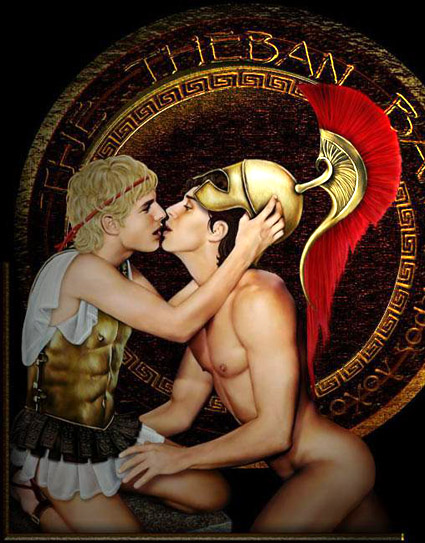
That is the secret of the Sacred Band of Lovers, the Sacred Band of Thebes, the 150 pairs of male warrior lovers who went into battle "wearing" their fear as a shield rather than allowing themselves to be consumed with fear.
I reiterate my appeal to you all that you should not fear Mars. Each of us has Mars positioned somewhere in our Birth Charts. Mars is the "Warrior Within" who is prepared to take up weapons to defend us, as he defended the fields of Rome as an agrarian deity, and as he carried Rome to greatness in subsequent centuries.
Please note that Hadrian worshipped Phobos and Deimos ? Fear and Panic. Hadrian was acquainted with the Mystery Teachings involving the Sacred Band of Thebes ? the warrior lovers who stood together in the face of insurmountable odds.
Hadrian clearly understood that we must turn Fear and Panic into constructive forces in our own lives. Instead of allowing them to plunge their daggers into our hearts, we must learn to convert the powerful energies of Fear and Panic into constructive forces which shield us from psychic assault.
Remember that Phobos and Deimos lead the war chariot of Mars into battle. Mars thus employs his "fearsome" sons as a shield to pave the way.
That is what the warrior lovers of The Theban Band of Warrior Lovers learned to do. They didn't merely suppress their fears and allow them to eat away at their insides. No, instead of suppressing their fear, they turned their fear into a powerful emotion-driven energy shield which protected them.
Emotional energies are very potent. We must learn to convert them into constructive and useful means for our Spiritual Advancement.
Hadrian understood how powerful Phobos and Deimos are. They are indeed "fearsome", and learning how to harness and constructively use their enormous powers is vital to Spiritual Advancement.
We are now in The Year of Mars. If you allow fear and doubt into your heart, they will most surely destroy it. But if you you banish fear and doubt from your heart, and instead wear their fears as a protective shield ? then you join The Army of Lovers, The Warrior Lovers who have learned to transform themselves from being VICTIMS into being VICTORS.
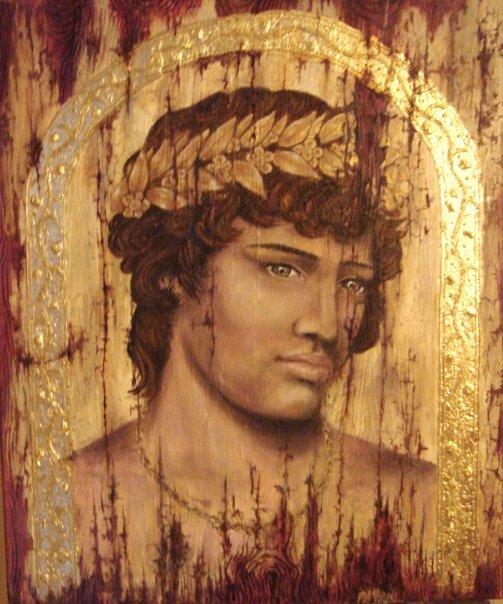
It was a truly historic occasion when, on February 26th, scores of people attended the first major public scholarly lectures on ANTINOUS THE GAY GOD to be held in modern times.
The lectures ? entitled Antinous: Gay Icon? ? were held at London's Petrie Museum of Egyptian Archaeology as part of Gay History Month in the British capital.
Representatives of the RELIGION OF ANTINOUS were on hand for the event and conferred with the organizers afterward in an exchange of ideas and inspirations for what both sides hope will be future Antinous-related public events.
The Petrie Museum lecturers, John J. Johnston and Cathie Bryan, both of whom are acknowledged lecturers and writers on Ancient Egypt, addressed a crowd which was twice the number that had been expected.
To say that the Petrie is a decidedly cosy venue for public events is putting it mildly since the museum is located in two rooms upstairs in a narrow storefront on the University College (UCL) campus in the busy heart of London.
The rooms are very small and cramped and museum officials (and visitors) look forward to the day when a large new museum is built so that the Petrie's entire collection of Egyptian artefacts can be exhibited ? 90 per cent of which currently are in storage.
The Petrie has been described online as "musty, fusty and dusty", which is a bit naughty since there isn't a speck of dust anywhere. There's not enough room to swing a mummified cat in that place, let alone for dust to gather. But to paraphrase Oscar Wilde (Saint of Antinous, by the way), the observation is well-phrased and thus as aptly accurate as any observation deserves to be.
As more and more people arrived for the lectures, extra seating hurriedly was scrounged together on an impromptu basis, and even then numerous guests had no choice during the two-hour discussions but to stand in a narrow aisle between towering glass display cases containing irreplaceable vases, potsherds and funereal equipment.
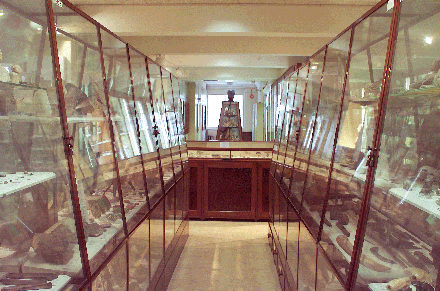
Incredibly, scores of people were jammed into the "lecture hall" depicted in the photo at right ? the lecture hall consisting of a narrow aisle between glass cases. The aisle was chock-a-block full with seated and standing guests as the lecturers gave their PowerPoint presentation at the far end.
It was an extraordinary atmosphere, being sandwiched between 5,000 years of Egyptian history. Indeed, one false move by any of us and we would have plunged INTO Egyptian history. Everyone was handed a glass of wine at the door, and so we were all in there juggling wine glasses, winter coats, backpacks, book satchels and notebooks, and trying not to topple off a folding chair and into one of those glass cases and sever a jugular vein or ? which would be worse ? damage a priceless artefact.
Clearly somewhat amazed by the crowd, lecture organizers said the Antinous lectures drew the largest turnout of any lecture in recent years at the Petrie, which houses the fourth-largest collection of Egyptian artefacts in the world, after the Cairo Museum, the Louvre and the British Museum.

Johnston gave a very thorough and precise outline of the historical person Antinous and his elevation by the Emperor Hadrian from provincial obscurity to the dizzying heights of Imperial Rome ? and upon his death, to the celestial realm of divinity. Johnston is shown at left in Paris with Antinous, who looks somewhat perturbed at having to carry Nile Inundation deity Hapy's water jugs in order to work the "Miracle of the Flood" ? the Blessed Boy's first documented miracle when he ended a years-long famine in 131 AD. Who knew divinity entailed heavy lifting?
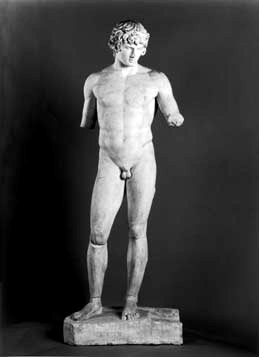
It is rare when we Antinoians hear something new, but Johnston said he believes he knows how tall Antinous may have been in life. Johnston noted that Hadrian and Antinous had traveled to Delphi and that they had been initiated into the Orphic Mysteries. A statue of Antinous was found at Delphi.
And Johnston pointed out that the Delphi Antinous statue (shown at right) had been found standing perfectly upright, which indicated that it had been very carefully buried by the priests so as to protect it from marauding Christians. Apparently the priests considered it very special. There are many larger-than-life statues of Antinous. And there are many busts. But the Delphi is a life-size statue, and Johnston said it is possible that it actually was modeled from the living Antinous during his visit there.
If that was indeed the case, then it is possible, according to Johnston, that Antinous was 5-feet, 8-inches tall (173 cms), which would have made him a taller-than-average young man in the 2nd Century AD. "He literally would have stood above his contemporaries," Johnston said.
An expert on sexuality in Ancient Egypt, Johnston is working toward his PhD at the Institute of Archaeology, University College London, where he obtained his MA in Egyptian Archaeology and assists with teaching from time to time. His PhD research addresses aspects of personal identity and display as revealed through Ptolemaic mortuary beliefs and practices.
He has lectured throughout Britain on subjects as diverse as the cinematic reception of ancient Egypt, alternative sexualities in Ancient Egypt, 19th Century collections of Egyptian artefacts and their collectors, and his recent discovery of royal shabtis at the Cuming Museum.
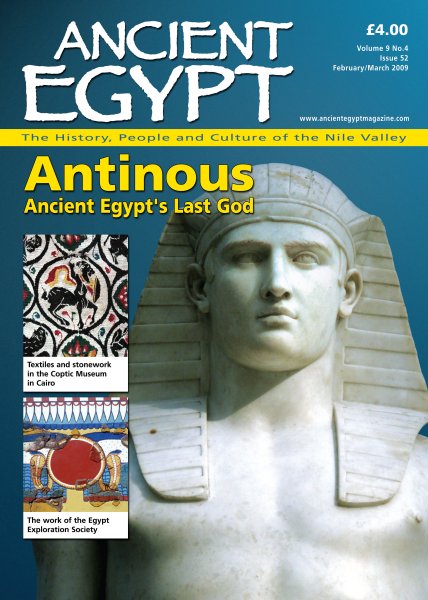
Bryan has degrees in anthropology from Hunter College, City University of New York (CUNY), and in Egyptian Archaeology from the UCL Institute of Archaeology. She writes and lectures about the Egyptian Revival in art and architecture, and conducts walking tours centered on the subject in Paris and London. Bryan is on the board of the British Egyptian Society and also the board of the Friends of the Petrie Museum. She writes regularly for Ancient Egypt magazine, the authoritative British Egyptological journal.
Bryan presented what our representatives agreed was the finest concise presentation we have ever heard on the influence that the Beauteous Boy has had on art, literature and the homophile rights movement in more modern times, particularly in the 18th, 19th and 20th Centuries.
Both Johnston and Bryan took pains to stress the highly divergent concepts of sexuality in Imperial Rome, as opposed to 21st Century Western societies. But they also did not shrink back from clearly identifying both Hadrian and Antinous as same-sex lovers who made no secret of their affection towards one another.
Bryan in particular stressed the efforts of such homosexually oriented 18th Century art collectors as Cardinal Albani and Johann Joachim Winckelmann, who spawned a veritable "Antino?mania" amongst the crowned heads of Europe in the 18th Century. And she noted how 19th Century homosexual writers eagerly took Antinous to their hearts as a symbol of the beauty and dignity and divinity to which homosexuality can aspire.
It was with great humility and also great pride that the representatives of your RELIGION OF ANTINOUS warmly introduced themselves to Johnston and Bryan after the talks and engaged in excited conversation over glasses of wine. Both of the experts seemed genuinely delighted to hear that members of the RELIGION OF ANTINOUS had traveled from near and far (in one case coming from a foreign country) especially to attend the evening's lecture series. And their professional interest was piqued by the fact that the Boy has followers on all seven continents of the Earth in this cybernetic age, so remote from the days of Ancient Rome.
A particular highlight of the event was an art exhibition at the Petrie featuring stunning encaustic-style portraits of Antinous (above) and Hadrian (below right) by the London-based artist Andrew Prior (seen left with his self-portrait at the Petrie Museum).
The show also featured modern portraits by Andrew done in the style of the famous Fayoum Portraits, which were found by the hundreds in the necropolis of the Sacred City of Antinoopolis.
Andrew practices his art in a wide range of media including works on paper canvas and wood, fashion design, interior design and jewellery design and manufacture.
He often works to commission, but also uses the inspiration of the ancient Mediterranean for his own personal creations, including the portraits in this exhibition which were inspired by the mummy portraits of Antinoopolis.
The portraits in this exhibition, with the exceptions of Hadrian and Antinous, were all from life and are acquaintances of Andrew.
The image at top left is Andrew's glorious portrait of Antinous.
The 2nd Century AD artists in Antinoopolis applied tempera mixed with hot wax to wood and Andrew has cunningly imitated that antique style on canvas.
In all, 22 portraits were on view and all were stunning, despite the fact that the lighting in the tiny museum is egregiously bad and the paintings were just hung in whatever empty spaces there happened to be on the wall on the periphery of the exhibits.
But his paintings are far more stunning than these photos imply. First of all, they are not on wood, but rather on canvas, but he has painted them and "aged" the canvas to make them look like wood. They are about 18 x 24 inches (40 x 60 cms) in size each. And the most incredible thing is that each portrait has an unbelievably detailed frame made of hammered metal which has been painted to look like ancient bronze, to which he has painstakingly added gemstones and scarabs and intaglios, cabochons, coins and related decoration, all of which ties into the clothing and jewelry which appears in each portrait.
These portraits are truly remarkable.
Those of us who were present at the Petrie that evening in London were keenly aware that we were witnessing an event of historic proportions in the long story of Hadrian and Antinous. There we were ? in a city that the Emperor had visited as a provincial outpost and which was now a major centre of Western Civilization ? and the story of the Blessed Boy was still being told. And his followers were still faithful to the Emperor's command to spread the RELIGION OF ANTINOUS throughout the civilized world.

Joe Dallesandro, the underground actor who became a gay icon in ground-breaking Andy Warhol films such as Flesh, Trash, Heat and Flesh for Frankenstein, and who was immortalized by Lou Reed in his classic song Walk on the Wild Side, received a Lifetime Achievement Award at the 23rd Gay Teddy Film Awards presentation during the 59th Berlin Film Festival this weekend.
The Teddy Awards honor achievement in gay and lesbian cinema. The award is a golden teddy bear, a diminutive version of the prestigious Golden Bear, the top award at the Berlin Film Fest. Last year, Tilda Swinton received a special Teddy for her work with late British director Derek Jarman.
Dallesandro was on hand to receive the award before a crowd of 2,000 at the nationally broadcast Gay Teddy Awards in Berlin. Looking dapper and square-jawed at age 60, Dallesandro appeared to be visibly moved as the audience roared with adulation when he strode on stage to receive the award.
"Europe always treated me like a star," he told the audience as he cradled the golden teddy-bear award in his hands. "In America, they treated me like an underground two-bit actor. But when Andy Warhol brought me to Europe for a film distribution tour, I was treated like a star from the second I got off the plane, and everywhere I went. I'll never forget that. Europe still treats me like a star."

Asked what he thought of being given a Lifetime Achievement Award, he said, "They called me up and said they wanted to give me this award and I said, what's it for, and they said, it's for being a gay icon who changed forever male sexuality on the screen, and I said, oh yeah, right. That's cool."
In an interview with TIMM, a German gay TV network, Dallesandro brushed aside the inevitable questions about his sex life by saying, "What sex life? I'm 60 years old. I don't have a sex life."
He said he had had enough sex for more than one life, having started out as the very same sort of gay hustler and porn model that he later portrayed on the screen.
"People always used to ask me about my sexuality. I don't believe in sexuality. It's whatever you want. And it's all your personal affair. I had all kinds of sex with all kinds of people. I had all the sex I'll ever need," he said.
He said one of the best things about being an underground actor was that he spent a lot of time at home waiting for gigs, which meant he had time to devote to this two sons.

"Kids need lots of attention when they are little and the fortunate thing about my career was that I was around a lot when mine were little. So it was, like, 'Daddy, Daddy!' and I was there for them."
He also said that he had grown up fast, coming from a troubled childhood which saw him sent to reform school at age 15. It was in reform school that he got the "Little Joe" tattoo on his right arm which became a cinematic trademark for him.
"It was there at this 'house of education'," he said with a note of irony in his voice, "where all us kids spent all our time giving each other tattoos. I gave myself a tattoo that said 'Little Joe' and so that name stuck with me the rest of my life."

Having matured early, Dallesandro, who turned 60 on New Year's Eve, said he now enjoys what he calls a second childhood with his grandchildren.
"Now at age 60 I watch children's TV, watch cartoons all the time, watch children's movies. I have a great time enjoying being a child. I buy toys for myself. I love being a child," he said with a big smile.
Two films featuring the actor screened at this year's Berlin Film Fest: Little Joe, Nicole Haeusser's new documentary on Dallesandro, and Catherine Breillat's Tapage Nocturne, which won Berlin's Panorama Audience Award in 1979.
Warhol reportedly once called Dallesandro "my Marilyn Monroe" and made a bundle of money off the low-budget films in which he appeared.
"When we made Flesh nobody had ever made a movie about hustlers before," Dallesandro said on TIMM, the German gay network. "But the next year Midnight Cowboy came out. And when we made Trash, nobody had ever made a movie about junkies before, and the next year Panic in Needle Park came out. Our films were quick to make and didn't cost much money, but made lots of money, and paved the way."
Initially, he was mystified by the notoriety those films initially received ? and by their legacy as iconic classics.
"They're shown in museums to this day," he marveled. At a Berlin news conference to promote the documentary about him, Little Joe, that premiered at the festival, Dallesandro ascribed his early films' success on the art-theater circuit to the fact that "Andy was the maestro of publicity."
Warhol, he said, never said more than two words to him during all the time he worked at his Factory.
Asked how he thought Warhol, who died in 1987, would have reacted to the documentary, he replied, "He would have said two words, 'Good luck'."
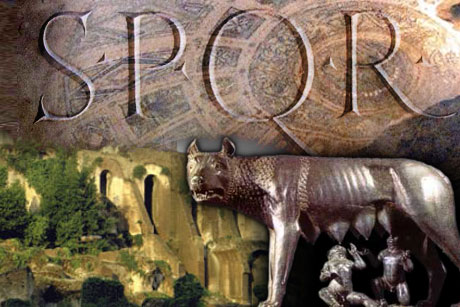
The Religion of Antinous observes Valentine's Day on the 14th and also the Lupercalia on the 15th ? two very ancient holidays which both involve love (if not lust and fertility) and both of which have become totally overwhelmed by legend and lore.
Even Hadrian and Antinous would not have known the precise origins of the Lupercalia, although they might well have visited the cave-like grotto ? the Lupercale ? at the foot of the Palatine Hill. As the fates would have it, experts currently are carrying out an extensive archaeological dig at a site at the foot of the Palatine which they believe is the ceremonial site of the Lupercale grotto where the caesars honored Romulus and Remus. It is intriguing to think that Hadrian and Antinous took part in the rites in this subterranean chamber.
Popular legend mixes Valentine's Day and the Lupercalia together as one. But we Antinoians keep them separate, because of one important and very little-known fact ? that there is a connection between St. Valentinus and Antinous. Here is how our own Arch Priest Antonyus Subia explains it:
"St. Valentinus is the Day of Love. Valentinus was the Gnostic Father who was a bishop of the Catholic Church. He tried to change orthodoxy by introducing the Gnostic speculation. Valentinus was from Alexandria and was there, studying with his teacher Basilides, when the court of Hadrian and Antinous arrived. He believed that Love was the creator of the universe, and the cause for the fall of Sophia, he believed that Jesus came to reverse the fall of Sophia, that Jesus was the consort of Sophia, the Aeon called Christos. The love between them was the reason that Jesus descended to save the world. Valentinus began his teaching in Rome, and gained so much support that he was even nominated for the Papacy but lost by a narrow margin. Eventually exiled for heresy, the Gnostic Father formed his own rival church that became an influential and widespread Gnostic sect, influencing Gnostic thought down to our own time. Because Valentinus was a witness of the Passion of Antinous, and because he attempted to change the Catholic Church, we sanctify his name and venerate him on this sacred day of Eros, the Day of Love."

Hadrian and Antinous probably also observed the Lupercalia, which was one of the most ancient of all religious rites in Ancient Rome. Gay author Steven Saylor, in his epic historical novel ROMA, offers a ribald version of the very first Lupercalia.
Picture it: The 8th Century BCE, a cluster of mud-hut villages in and around a number of hills which are called the "ruma" ("titties") by local wags. Ruma/Roma is nothing but a bunch of bickering clans in rival villages who hate the fact that they are dependent on each other for their mutual livelihood.
In Saylor's novel, two orphaned twin boys are raised in a grotto on the edge of the settlement by a slutty wench who only agreed to take them in so her swineherd "husband" could have help slopping the hogs. Her boobs are so prodigious that her nasty husband has given them names reminiscent of two of the surrounding hills: Romulus and Remus.
This uncouth swineherd gets a good old chortle out of watching her nurse the two infants simultaneously ? and so Romulus and Remus become the boys' names, much to the chagrin of the decent neighbors who look down their noses at the whole family and derisively call the woman the "She-Wolf of the Ruma district" for her sexual wantonness.
In Saylor's novel, young Romulus and Remus become the terror of the neighborhood as they grew into adolescence, bullying other kids and subjecting neighbors to practical jokes and petty thievery.
Just to shock everybody and to get their rocks off, they team up with a third boy (from upstanding parents who are unaware that he hangs out with these yobbos), and the three of them decide to play a really raunchy trick on the local girls.
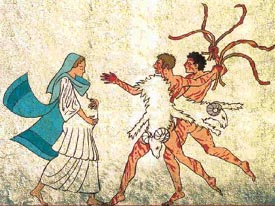
They find three old moth-eaten animal hides and proceed to strip off buck naked and put on the hides so that the animal faces cover their own. Then they run howling through the district, chasing girls and whipping their backsides with strips of hide ? while making no effort to conceal their teenage hardons, which swing lewdly to and fro as they run.
The result is that the teenage girls have fun squealing and pretending to be frightened. The decent people of Roma get all huffy and say something must be done about Romulus and Remus, since everybody knows it could only have been them, and now they've enlisted the help of a third boy in their lewd carousing, just underscoring what a bad influence they are.
Meanwhile, rival clans enjoy the whole spectacle of their neighbors getting all outraged, and THEY think Romulus and Remus are pretty cool ? that is until R&R raid a more distant settlement where a self-proclaimed king has hoarded a considerable treasure, and they return to Roma with his iron crown and all of his booty after having slit his throat. Suddenly these trashy young thugs are the richest people in Roma and the whole delicate balance of power amongst the clans is thrown out of kilter ....
Well, that's one fictional version of the first Lupercalia. For centuries, a cave-like grotto at the foot of the Palatine was revered as the sacred site where the "She-Wolf" suckled the orphans Romulus and Remus. Young nobles called Luperci, taking their name from the place of the wolf (lupa), ran naked from the Lupercale grotto around the bounds of the Palatine, and used strips of hide to slap the hands or buttocks of girls and women lining the route.
Here is how Arch Priest Antonyus explains its significance for the Religion of Antinous:
"The Lupercalia is the festival of the wolf mother of Rome, and sacred festival of Antinous Master of Hounds. The Lupercalia remembers the she-wolf who raised Romulus and Remus, twin sons of Venus and Mars, who later founded the city of Rome. The wolf-like nature of the twins and of the Roman character was imparted through the milk of the wolf-mother. The spirit transferred through the loving milk of the ferocious mother is celebrated on this day, and is integral to the concept of Antinous the Hunter. Antinous took his place at Hadrian's feet, and accompanied him bravely and loyally through the forests and lived by the Emperor's side for seven years, which is equivalent to the life of a strong hunting dog. The Canine nature of Antinous is celebrated on this day and is seen as an allegory for the Priesthood of the Religion of Antinous."
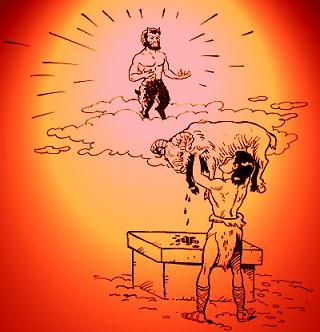
In his annual Lupercalia Epistle to ECCLESIA ANTINOI members worldwide this week, Antonyus goes on to explain that the Lupercalia festival is a purification rite, cleansing the way for Spring, nurishing the winter spirit of the dormant wolves within so as to fuel the ruthless courage of Roman warriors. A Dog and a Goat were sacrificed, and the young noble youths raced around the city naked except for goat, or wolf skins, whipping any girls or women who they encountered.
Arch Priest Antonyus explains, "The Festival is also sacred to Faunus, the Roman Pan...the one who 'drives away the wolf from the flock.'...we usually think of Pan as Goat-horned and cloven hooved, but 'the one who drives away the wolf'...could quite possibly be a sacred Dog. Lupercalia is therefore quite possibly a dog festival...and it is interesting to note that it falls almost exactly opposite the calendar from the rise of the Dog Star."
Arch Priest Antonyus elaborates by adding, "For me, Lupercalia is a time of cleansing and light...the lighted lamp that preceeds the coming dawn of Spring...a preparation for the Flowering....
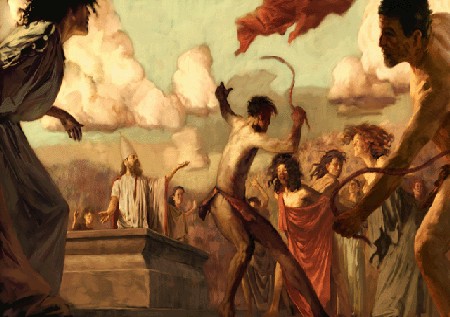
"So a celebration or ritual to observe the Lupercalia should focus on purification. ..self-purificat ion primarily, but also the purification of the home, and surroundings. A cleansing of negative, stagnet, dusty, mildewy, settled, sedimentary influences that we are ready to clear away...from within and without."
He also outlines rituals for purification and cleansing which members of the worldwide Religion of Antinous will be performing this weekend.
Antonyus says the Lupercalia harkens to the most ancient of rites of Spring, and he says the cleansing must come from within.
"And then look into your soul, observe your interactions. ..make changes for the better...be kinder, more polite, or just simply be friendlier to people...and do something strickly for your own pleasure," he says in his Lupercalia Epistle.
In conclusion, he stresses, "It is really a matter of deep and meaningful concentration on cleansing your mind and heart of negative internal influences...so as to strengthen your fortifications against external negative influences."
Noted scholar and mystery writer Ben Pastor's award-winning historical novel about the search for the Lost Tomb of Antinous has just been translated into Portuguese and hit book stores throughout Brazil this past week.
Many of you who love the Blessed Boy have read The Water Thief ? and if you haven't, you ought to do so because it provides insights into the Religion of Antinous in its full bloom at the turn of the 4th Century AD. Much of the action is set in the Sacred City of Antinoopolis, and even in the Great Temple itself.
The Brazilian edition (cover art at left) is entitled O Ladr?o da ?gua and is certain to appeal to Antinous worshippers in Brazil. For reasons no one quite understands, Brazilian gay men are particularly enamored of Antinous. It is a mysterious phenomenon which even we Antinoians can't explain.
In 2008 the Spanish translation of The Water Thief won the prestigious Premio internacional de la novela historica Ciudad de Zaragoza, Spanish literature's premiere award for historical fiction.
A delightful and witty person with feet in two continents, Ben Pastor was born in Rome, but her career as a college teacher and writer requires that she divide her time between the United States and Italy, where she is now doing research on sequels to The Water Thief and is also currently involved in an archaeological dig. Author of the internationally acclaimed Martin Bora war mysteries, she wrote The Water Thief as the first in a new series of novels focusing on the Ancient Roman soldier/historian Aelius Spartianus. In addition to the United States, her novels are published in Italy, Germany, Spain, Poland, and the Czech Republic.
Ben Pastor is well known for her Martin Bora mysteries set in Nazi-occupied Europe, and with her Spartianus books she shows she is just as much at home with the Legions in Ancient Rome. She is indeed a master at the craft of writing a mystery that is more than a mystery and a historical novel that is more than a historical novel.
In fact, her books defy easy categories. The murder mystery plots, while riveting, are only part of the fun of reading her books. She has an incredible eye for detail and for precise time and place. Each event corresponds to a calendar date. Each setting is an authentic place. When Ben Pastor describes a rain cloud on the horizon, you half-suspect she consulted an ancient almanac to verify the weather on that day in the year 304 in the vicinity of Oxyrhynchos.
Above all, her characters are vividly drawn and fully complex human beings. Her dialogue is superb. The characters are never one-dimensional, never all-good or all evil, never entirely what they appear to be on the surface ? just like all of us. Spartianus is a tolerably decent and honorable man who finds himself in perfectly intolerable situations. And as in all her novels, even the minor characters are fleshed out. There are always a couple of intriguing eccentrics.
In The Water Thief there is the outrageous tranny whore Cleopatra Minor, who spins a yarn about how Hadrian discovered Antinous as an 11-year-old toy boy at a male brothel on the Bay of Naples. And in the sequel The Fire Waker, we have the nymphomaniac Helena who uses the wiles of her body in a bid to bring her son Constantine to the throne. The reader knows, of course, that the man-hungry, sluttish Helena will one day be honored as a Christian saint.
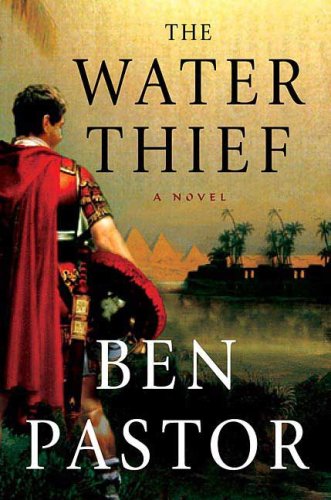
The Water Thief has the added benefit of being the first novel in half a century to focus on Antinous the Gay God. Read it and, like me, you will have vivid dreams of Antinous. He stood in front of me with a golden wreath in his hair, and with a face grey-eyed and lovely and tranquil, which no astonishment or pain seemed ever to have marred.
Set in the year 304 AD, it tells of a very literate Roman army officer who is commissioned by Emperor Diocletian to do research on his predecessor the Divine Hadrian, who had died nearly two centuries earlier.

It is while delving into the mystery of the death of Antinous and while trying to learn the whereabouts of the Boy's tomb that the officer stumbles onto evidence of a letter penned by Hadrian uncovering a covert conspiracy to bring down the Empire ? a conspiracy that is still very much at work in 4th Century Rome. As he comes ever closer to finding the answer to the death of Antinous, the conspirators' efforts to thwart him become ever more violent, resulting in numerous brutal murders and attempts on his life.
The book opens in Antinoopolis, where Aelius Spartianus (who actually existed and actually wrote a biography of Hadrian) begins his search for the Lost Tomb of Antinous.
Ben's Antinoopolis is a lively city of gay bathhouses and bejeweled gay priests (laden with eye make up and attitude) and also a city of bitter feuds between Christian hot heads and angry Jews and jaded Roman provincial administrators.
But it is when Spartianus heads to Rome itself that this book really takes off. The author's obvious love for the Eternal City makes her book a joy to read.
Her descriptions of Rome are superb. You get a real feel for the teeming city in mid-summer, with all the odors and noise, colors and steamy heat that that implies. Best of all, for those of us who love and worship Antinous, are the chapters in which Spartianus ensconces himself in Hadrian's derelict villa outside Rome. It is there, as he stares up into the stars at night, that he makes a startling connection between the layout of the villa and the eight visible constellations in the nighttime sky in late October when Antinous died ? indicating that Hadrian's obsession with horoscopes and astrology led him to create an earthly universe where time stood still at the death of Antinous.
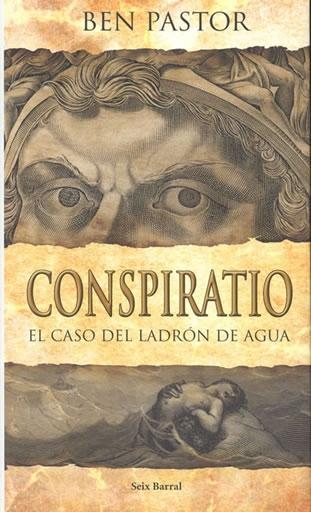
Did Hadrian's belief in astrological fate compel him to have Antinous killed? Or did Antinous take his own life in a bid to fulfill his astrological fate? Or was it more mundane? Did he and Hadrian have a lovers' tiff that ended tragically? Was he done in by young male rivals intent on gaining Hadrian's affections for themselves? Or was something even more sinister at work? And why is someone desperate to prevent Spartianus from finding out what happened to Antinous all those years ago?
For those of us who love Antinous, this book is a joy to read. Ben works in many small and obscure details which are well known to his modern-day followers. To give just one example, Spartianus expends a great deal of effort trying to locate and decipher the Obelisk of Antinous which today stands in a park in northwest Rome is the focus of much current research.
The obelisk's key inscription, which is the focus of modern experts seeking his tomb, says that Antinous "rests within the garden bounds of the great lord of Rome". Just as today's researchers have puzzled over the meaning of that phrase, Ben's protagonist must also make sense of it ? and he arrives at a startling answer that almost costs him his life and jeopardizes future of the Empire.
There are numerous gay characters and they emerge as well-rounded and believable characters, especially the flamboyant Egyptian gays who find themselves unwittingly the target of unscrupulous killers in their very midst.
The tales of Antinous and Hadrian which unfold as the investigation progresses are a true pleasure to read, if only because they are all so contradictory and often far-fetched ? precisely as they are to today's researchers. Aelius Spartianus must work his way through this thicket of tall tales and outright lies and defamations in order to determine precisely what sort of persons Hadrian and Antinous were ? in order to save the Empire two centuries after their deaths.
One of the more outlandish tall tales is told to him by the Roman hustler Cleopatra Minor who claims to have frequented a notorious whorehouse which specializes in boys for aristocratic customers whose villas line the Bay of Naples. Cleo claims it is "well-known there" that Antinous was a boy prostitute who had just arrived from Bythinia and "had barely become accustomed to his little bed" when Hadrian stopped by the whorehouse and took a fancy to him.
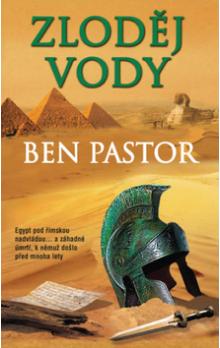
There are lots of other, equally intriguing characters in this book. But the most intriguing character of all, of course, is the one character who cannot take active part in the plot but whose presence is felt at every turn of the plot:
Antinous himself.
Though the 4th Century murders take center stage in the story, this book actually is more concerned with telling the story of Antinous and Hadrian and their abiding love affair which spans the gulf of the centuries.
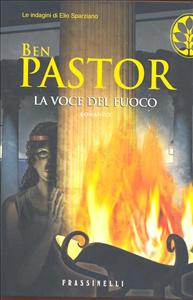
As you read the novel, you get a growing awareness of Antinous as the living, breathing, three-dimensional human being that he must have been in life. The more Spartianus looks into the life of Antinous, the more he becomes obsessed with the Blessed Boy. He simply has to find that tomb, even if it means his death and the downfall of Rome.
I won't give away the thrilling ending, except to say that, when Spartianus finally "exchanges glances" with Antinous (in a manner of speaking), he is overcome with emotion ? and the reader finds it hard to hold back the tears.
This is the finest historical novel about Antinous since Marguerite Yourcenar's M?moires d'Hadrien. Particularly if you are an adherent of his modern-day religion, you'll come away with new insights and new theories of your own about the mystery of the life and death of Antinous ? and his place amongst the stars.
If nothing else, after putting down the book before falling asleep, you'll dream of the Blessed Boy.
And when you learn the identity of the Water Thief, you'll realize that this insidious foe is stealthily at work in your own life today, just as in the life of Antinous and of the Roman Empire.
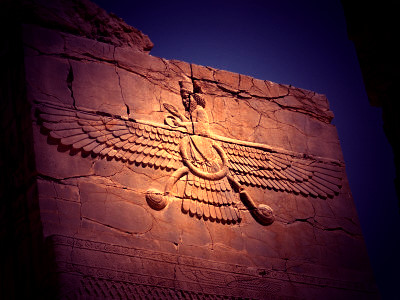
On the evening of February 1st ? actually, the Eve of February 2nd ? the Religion of Antinous remembers the arrival of Hadrian and the Blessed Boy in Armenia early in the year 130 AD.
The court spent much of the winter 129-30 in Antioch, but Hadrian and Antinous set out with a light escort across lower Cappadocia and into Armenia at the end of January 130.
This is the farthest East that Antinous was ever to travel and is observed here in conjunction with Imbolc, also known as Candlemas, a Festival of Newborn Light. In many countries in Europe today, the Eve of February 2nd is the day when people take down their Christmas decorations. This is the evening when Christmas trees are removed from front rooms after having been set up on Christmas Eve.

It is an odd phenomenon that, in the English-speaking world, people put up Christmas trees about a month PRIOR to Christmas and then take them down right after the Big Day ? but in other cultures, trees go up on Christmas Eve and decorate living rooms for weeks AFTER Christmas.
Thus Imbolc/Candlemas is an arcane and largely forgotten non-event in the English-speaking world. Yet in fact, it is the evening when the God of Light becomes manifest in the world ? part of an ancient celebration that goes way back before Christianity and even before Celtic tradition.
Hadrian and Antinous got a first-hand glimpse of these celebrations which, even in their time, were truly very ancient. Hadrian, who was fascinated with ancient cultures, was intrigued by the Armenians, which explains why he made this particular side trip over the mountains in the dead of winter.
Our own Arch Priest Antonyus Subia explains the significance which piqued the Emperor's curiosity:
"Though indigenous and Phoenician deities were worshipped, the Armenians of this time are considered to have been Zoroastrians because of the many hundreds of years that they had been controlled and influenced by Persia.
"Their religion venerated fire as the manifestation of the Ahura Mazda, the God of Light who had descended into the Kingdom of Darkness, which is our world, in order to fight the evil one and prevent his rise to the place of eternal light.
"Life on earth is understood by Zoroastrians as the struggle between our double natures. The body is composed of evil and darkness, the spirit is made of fire and light and belongs to Ahura Mazda.
"Antinous would have been exposed to the influence of Zoroaster while visiting the Temples in Armenia, and because it is the furthest point East in his travels, it is symbolically the nearest he came to the rising sun."

On the evening of February 1st, I invite you to turn out the lights in your home and light a simple beeswax candle symbolizing the end of the Northern Hemisphere's Winter Festivals (Halloween through Christmas) and the beginning of the Spring Festivals of New Birth and New Light. In fact, this is the start of the Carnival season. And, indeed, in some years Mardi Gras occurs in early February. And even in years when Carnival starts later, this night is always considered party night by those people who design and make Mardi Gras floats and costumes ? in Rio and in New Orleans and in Venice, Carnival aficionados will by partying all night tonight.

And the following morning ? bright and early on February 2nd ? people in another obscure part of the globe will be watching for a Groundhog called Punxsutawney Phil to emerge from his burrow to catch a glimpse of the God of Light.
These seemingly disparate customs are all remnants of a religious festival so very ancient that it was archaic even in the time of Hadrian and Antinous. Today it is little more than a day to pack away ornaments or a day to get drunk at a pre-Carnival party. It is scarcely more than media hype surrounding a mammal held aloft at dawn by Pennsylvania Dutch descendants of immigrants from Central Europe. And it is a day when garbage men throughout Europe stagger under the weight of dried-out old Christmas trees.
But if you turn out the lights and leave just one simple candle burning brightly in the darkness ? you may just catch a glimpse of the God of Light. That is what Hadrian and Antinous were hoping to catch a glimpse of on this day so many centuries ago.

ALL RIGHTS RESERVED
PERMISSION MUST BE GRANTED BY THE AUTHOR FOR USE ELSEWHERE